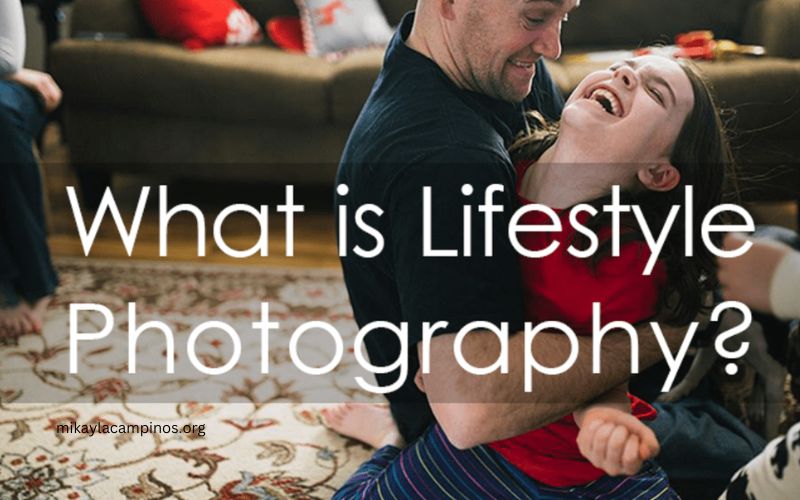Lifestyle photography is a genre of photography that focuses on capturing the natural, candid moments of people’s everyday lives. Unlike traditional portrait or product photography, lifestyle photography aims to tell a story and evoke emotions through the images. It’s a style that has gained immense popularity in recent years, as it allows photographers to create visually stunning and relatable content that resonates with their audience.
In lifestyle photography, the emphasis is on capturing the subject’s natural behavior, interactions, and environment, rather than posing them in a studio setting. This approach results in images that feel authentic, genuine, and often, more visually compelling than traditional, posed photographs.
The Difference Between Lifestyle Photography and Traditional Photography
The key difference between lifestyle photography and traditional photography lies in the approach and the desired outcome. While traditional photography often focuses on technical perfection, such as perfect lighting, composition, and posing, lifestyle photography prioritizes the emotional connection and the storytelling aspect of the image.
In traditional photography, the photographer typically has complete control over the subject, the environment, and the final result. In contrast, lifestyle photography embraces the unpredictability and spontaneity of the moment, allowing the subjects to be themselves and the photographer to capture those unscripted, authentic moments.
Benefits of Lifestyle Photography
Lifestyle photography offers numerous benefits for both photographers and their clients. Here are some of the key advantages:
- Emotional Connection: Lifestyle photography has the power to create a deeper emotional connection between the viewer and the subject, as it captures the essence of the person’s personality and experiences.
- Authenticity: By focusing on natural, candid moments, lifestyle photography produces images that feel genuine and relatable, rather than staged or artificial.
- Versatility: Lifestyle photography can be applied to a wide range of subjects, from families and individuals to businesses and brands, making it a versatile and adaptable style.
- Storytelling: Lifestyle photography excels at telling a story through a series of images, capturing the narrative of a person’s life or a brand’s identity.
- Engagement: Lifestyle photography often resonates more strongly with audiences, leading to increased engagement and sharing on social media platforms.
Key Elements of a Successful Lifestyle Photoshoot
To create compelling lifestyle photographs, there are several key elements to consider:
- Natural Lighting: Lifestyle photography thrives on natural, ambient lighting, which helps to create a more authentic and atmospheric feel to the images.
- Candid Moments: The focus should be on capturing spontaneous, unposed moments that showcase the subjects’ natural behavior and interactions.
- Interesting Environments: The setting and environment play a crucial role in lifestyle photography, as they help to provide context and add visual interest to the images.
- Genuine Emotions: Lifestyle photography is all about capturing genuine emotions, whether it’s laughter, joy, contemplation, or any other human expression.
- Attention to Detail: While the overall focus is on the natural and candid, lifestyle photographers must still pay attention to the details, such as composition, framing, and the overall aesthetic of the image.
Tips for Capturing Authentic Moments in Lifestyle Photography
Capturing authentic moments in lifestyle photography requires a different approach than traditional portrait or product photography. Here are some tips to help you achieve this:
- Observe and Anticipate: Spend time observing your subjects and their environment, and try to anticipate the moments that might unfold, so you’re ready to capture them.
- Engage with Your Subjects: Interact with your subjects, make them feel comfortable, and encourage them to be themselves, rather than posing them.
- Shoot Continuously: Shoot in bursts, rather than waiting for the “perfect” moment, as this will increase your chances of capturing authentic, candid expressions and gestures.
- Blend into the Background: Try to be as unobtrusive as possible, so your subjects don’t feel self-conscious or perform for the camera.
- Embrace Imperfections: Don’t be afraid of slight imperfections or “mistakes” in your images, as they can often add to the authenticity and character of the photograph.
How to Find the Right Subjects for Lifestyle Photography
Choosing the right subjects is crucial for successful lifestyle photography. Here are some tips to help you find the perfect subjects:
- Look for Relatable Characters: Seek out subjects that are relatable and representative of your target audience, as this will help to create a stronger emotional connection with the viewer.
- Observe Your Surroundings: Keep your eyes open for interesting people, families, or groups in your everyday life, and don’t be afraid to approach them and ask if they’d be willing to participate in your photoshoot.
- Network with Influencers and Brands: Collaborate with influencers, bloggers, or brands that align with your style and vision, as they can provide access to a diverse range of potential subjects.
- Tap into Your Personal Connections: Draw from your own network of friends, family, and acquaintances, as they may be more comfortable and willing to participate in your lifestyle photography projects.
- Attend Events and Gatherings: Attend local events, festivals, or community gatherings, where you can observe and capture the natural interactions and moments that unfold.
Editing and Post-Processing Techniques for Lifestyle Photography
Editing and post-processing are crucial steps in the lifestyle photography workflow, as they can help to enhance the overall mood and aesthetic of the images. Here are some key techniques to consider:
- Subtle Color Grading: Apply gentle color grading to your images, using tools like Lightroom or Photoshop, to create a cohesive and visually appealing color palette.
- Selective Adjustments: Use selective adjustments, such as dodging and burning, to draw the viewer’s eye to the most important elements of the image.
- Minimal Retouching: Avoid heavy-handed retouching, as this can detract from the authenticity of the image. Instead, focus on subtle skin smoothing, blemish removal, and other minor adjustments.
- Lifestyle-Inspired Presets: Consider creating or using presets that are specifically designed for lifestyle photography, as they can help to streamline your editing process and achieve a consistent look across your portfolio.
- Storytelling through Editing: Approach your editing with a storytelling mindset, using techniques like cropping, sequencing, and selective focus to guide the viewer’s eye and create a cohesive narrative.
Examples of Successful Lifestyle Photography Campaigns
To further illustrate the power of lifestyle photography, let’s take a look at some examples of successful campaigns:
- Airbnb’s “Live There”: Airbnb’s “Live There” campaign features stunning lifestyle photography that showcases the authentic experiences of its guests, helping to convey the brand’s message of authentic travel and local immersion.
- Dove’s “Real Beauty”: Dove’s “Real Beauty” campaign has been a groundbreaking example of lifestyle photography, featuring diverse, unretouched models and celebrating the natural beauty of women.
- GoPro’s User-Generated Content: GoPro has built a strong brand identity by leveraging user-generated lifestyle photography, showcasing the adventurous and active lifestyles of its customers.
- Warby Parker’s “Home Try-On”: Warby Parker’s “Home Try-On” campaign uses lifestyle photography to showcase their eyewear in the natural environments of their customers, creating a more relatable and engaging experience.
- Patagonia’s Environmental Activism: Patagonia’s lifestyle photography often features its customers engaged in outdoor activities, while also highlighting the brand’s commitment to environmental activism and sustainability.
The Future of Lifestyle Photography
As the demand for authentic, relatable content continues to grow, the future of lifestyle photography looks increasingly bright. Here are some trends and developments to watch for:
- Increased Emphasis on Sustainability and Social Responsibility: Brands and photographers will likely place a greater emphasis on creating lifestyle imagery that aligns with values of sustainability, diversity, and social responsibility.
- Expansion of User-Generated Content: The rise of social media and the increasing accessibility of high-quality cameras will continue to fuel the growth of user-generated lifestyle photography, as brands seek to leverage the authentic experiences of their customers.
- Integration of Augmented Reality and Virtual Reality: As technology advances, we may see the incorporation of augmented reality (AR) and virtual reality (VR) into lifestyle photography, allowing viewers to immerse themselves in the scenes and experiences captured by the photographer.
- Personalization and Customization: Lifestyle photography may become more personalized and customized, as brands and individuals seek to create unique, tailored content that resonates with their specific audiences.
- Continued Evolution of Editing and Post-Processing Techniques: As software and editing tools continue to evolve, lifestyle photographers will likely experiment with new techniques and approaches to enhance the authenticity and visual appeal of their images.



